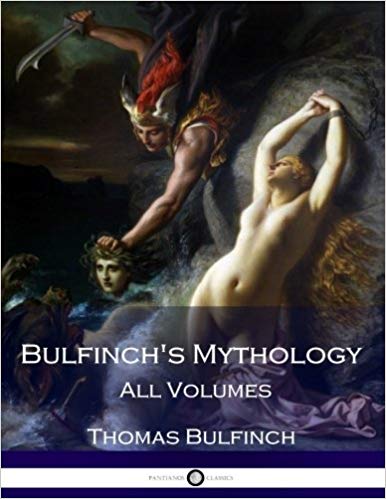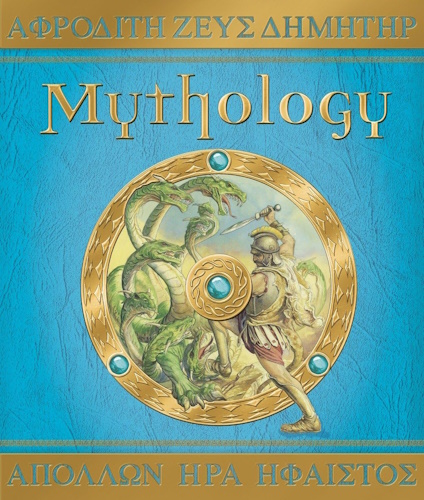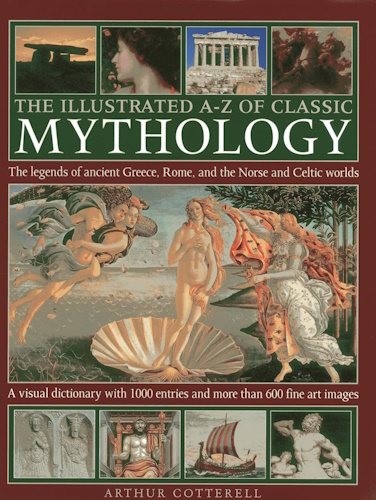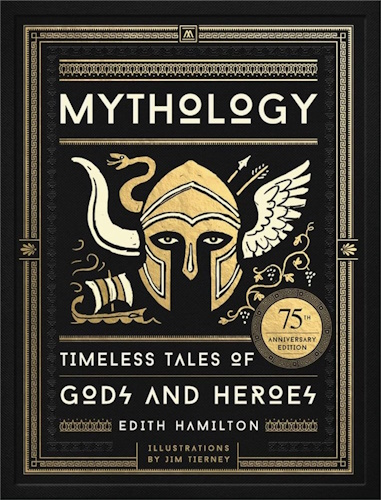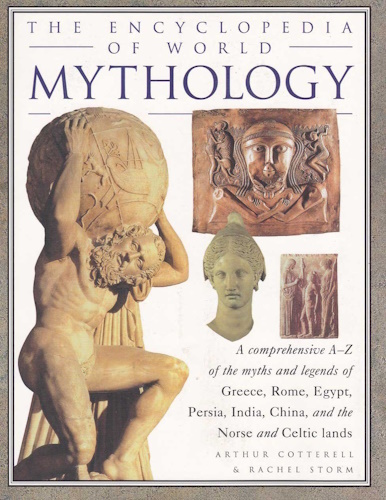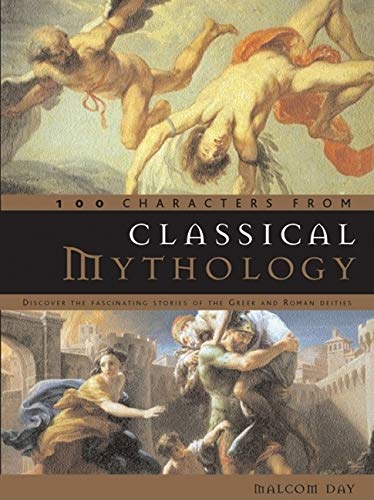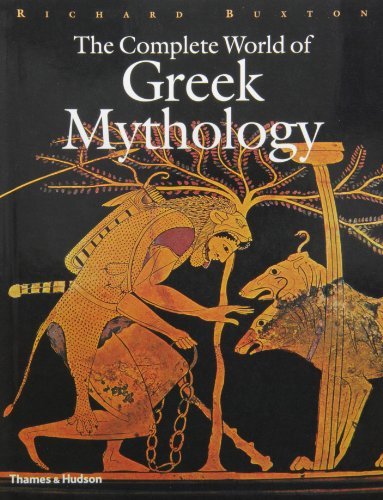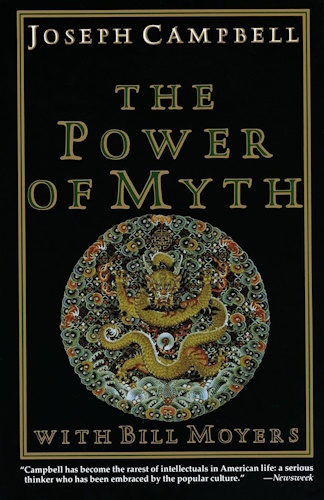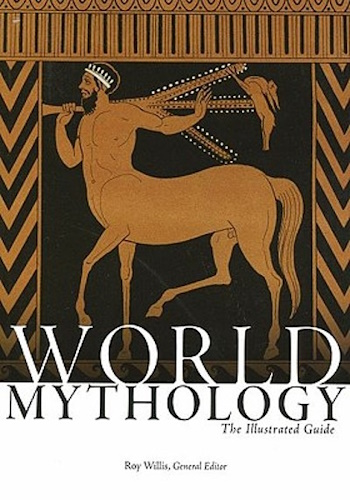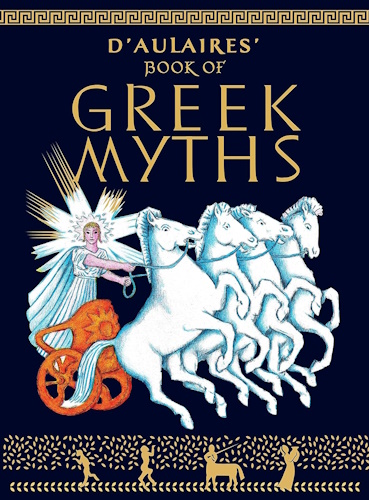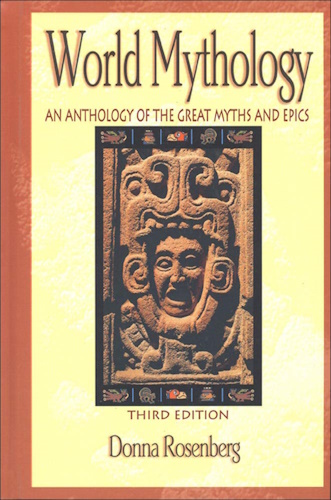
![]()
![]()
Part I.
King Arthur and His Knights.
Chapter IV.
Caradoc Briefbras; or Caradoc with the Shrunken Arm.
CARADOC was the son of Ysenne, the beautiful niece of Arthur. He was ignorant who his father was, till it was discovered in the following manner: When the youth was of proper years to receive the honors of knighthood, King Arthur held a grand court for the purpose of knighting him. On this occasion a strange knight presented himself, and challenged the knights of Arthur's court to exchange blow for blow with him. His proposal was this,– to lay his neck on a block for any knight to strike, on condition that, if he survived the blow, the knight should submit in turn to the same experiment. Sir Kay, who was usually ready to accept all challenges, pronounced this wholly unreasonable, and declared that he would not accept it for all the wealth in the world. And when the knight offered his sword, with which the operation was to be performed, no person ventured to accept it, till Caradoc, growing angry at the disgrace which was thus incurred by the Round Table, threw aside his mantle and took it. "Do you do this as one of the best knights?" said the stranger. "No," he replied, "but as one of the most foolish." The stranger lays his head upon the block, receives a blow which sends it rolling from his shoulders, walks after it, picks it up, replaces it with great success, and says he will return when the court shall be assembled next year, and claim his turn. When the anniversary arrived both parties were punctual to their engagement. Great entreaties were used by the king and queen, and the whole court, in behalf of Caradoc, but the stranger was inflexible. The young knight laid his head upon the block, and more than once desired him to make an end of the business, and not keep him longer in so disagreeable a state of expectation. At last the stranger strikes him gently. with the side of the sword, bids him rise, and reveals to him the fact that he is his father, the enchanter Eliaures, and that he gladly owns him for a son, having proved his courage, and fidelity to his word.
But the favor of enchanters is short-lived and uncertain. Eliaures fell under the influence of a wicked woman, who, to satisfy her pique against Caradoc, persuaded the enchanter to fasten on his arm a serpent, which remained there sucking at his flesh and blood, no human skill sufficing either to remove the reptile or alleviate the torments which Caradoc endured.
Caradoc was betrothed to Guimier, sister to his bosom friend Cador, and daughter to the king of Cornwall. As soon as they were informed of his deplorable condition, they set out for Nantes, where Caradoc's castle was, that Guimier might attend upon him. When Caradoc heard of their coming his first emotion was that of joy and love. But soon he began to fear that the sight of his emaciated form and of his sufferings would disgust Guimier; and this apprehension became so strong that he departed secretly from Nantes, and hid himself in a hermitage. He was sought far and near by the knights of Arthur's court, and Cador made a vow never to desist from the quest till he should have found him. After long wandering, Cador discovered his friend in the hermitage, reduced almost to a skeleton, and apparently near his death. All other means of relief having already been tried in vain, Cador at last prevailed on the enchanter Eliaures to disclose the only method which could avail for his rescue. A maiden must be found, his equal in birth and beauty, and loving him better than herself, so that she would expose herself to the same torment to deliver him. Two vessels were then to be provided, the one filled with sour wine and the other with milk. Caradoc must enter the first, so that the wine should reach his neck, and the maiden must get into the other, and, exposing her bosom upon the edge of the vessel, invite the serpent to forsake the withered flesh of his victim for this fresh and inviting food. The vessels were to be placed three feet apart, and as the serpent crossed from one to the other a knight was to cut him in two. If he failed in his blow, Caradoc, would indeed be delivered, but it would only be to see his fair champion suffering the same cruel and hopeless torment. The sequel may be easily foreseen. Guimier willingly exposed herself to the perilous adventure, and Cador, with a lucky blow, killed the serpent. The arm, in which Caradoc had suffered so long, recovered its strength, but not its shape, in consequence of which he was called Caradoc Briefbras, Caradoc of the Shrunken Arm.
Caradoc and Guimier are the hero and heroine of the ballad of the Boy and the Mantle, which follows.
The Boy and the Mantle.
In Carlisle dwelt King Arthur,
A prince of passing might,
And there maintained his Table
Beset with many a knight.
And there he kept his Christmas,
With mirth and princely cheer,
When lo! a strange and cunning boy
Before him did appear.
A kirtle and a mantle
This boy had him upon,
With brooches, rings, and ouches,
Full daintily bedone.
He had a sash of silk.
About his middle meet;
And thus with seemly curtesie
He did King Arthur greet:
"God speed thee, brave King Arthur,
Thus feasting in thy bower,
And Guenever, thy goodly queen,
That fair and peerless flower.
"Ye gallant lords and lordlings,
I wish you all take heed,
Lest what ye deem a blooming rose
Should prove a cankered weed."
Then straightway from his bosom
A little wand he drew;
And with it eke a mantle,
Of wondrous shape and hue.
"Now have thou here, King Arthur,
Have this here of me,
And give unto thy comely queen,
All shapen as you see.
"No wife it shall become,
That once hath been to blame."
Then every knight in Arthur's court
Sly glanced at his dame.
And first came Lady Guenever,
The mantle she must try.
This dame she was new-fangled8
And of a roving eye.
When she had taken the mantle,
And all with it was clad,
From top to toe it shivered down,
As though with shears beshred.
One while it was too long,
Another while too short,
And wrinkled on the shoulders,
In most unseemly sort.
Now green, now red it seemed,
Then all of sable hue;
"Beshrew me," quoth King Arthur,
"I think thou be'st not true!"
Down she threw the mantle,
No longer would she stay;
But, storming like a fury,
To her chamber flung away.
She cursed the rascal weaver,
That had the mantle wrought;
And doubly cursed the froward imp
Who thither had it brought.
"I had rather live in deserts,
Beneath the greenwood tree,
Than here, base king, among thy grooms,
The sport of them and thee."
Sir Kay called forth his lady,
And bade her to come near:
"Yet, dame, if thou be guilty,
I pray thee now forbear."
This lady, pertly giggling,
With forward step came on,
And boldly to the little boy
With fearless face is gone.
When she had taken the mantle,
With purpose for to wear,
It shrunk up to her shoulder,
And left her back all bare.
Then every merry knight,
That was in Arthur's court,
Gibed and laughed and flouted,
To see that pleasant sport.
Down she threw the mantle,
No longer bold or gay,
But, with a face all pale and wan,
To her chamber slunk away.
Then forth came an old knight
A-pattering o'er his creed,
And proffered to the little boy
Five nobles to his meed:
"And all the time of Christmas
Plum-porridge shall be thine,
If thou wilt let my lady fair
Within the mantle shine."
A saint his lady seemed,
With step demure and slow,
And gravely to the mantle
With mincing face doth go.
When she the same had taken
That was so fine and thin,
It shrivelled all about her,
And showed her dainty skin.
Ah! little did her mincing,
Or his long prayers bestead;
She had no more hung on her
Than a tassel and a thread.
Down she threw the mantle,
With terror and dismay,
And with a face of scarlet
To her chamber hied away.
Sir Cradock called his lady,
And bade her to come near;
"Come win this mantle, lady,
And do me credit here:
"Come win this mantle, lady,
For now it shall be thine,
If thou hast never done amiss,
Since first I made thee mine."
The lady, gently blushing,
With modest grace came on;
And now to try the wondrous charm
Courageously is gone.
When she had taken the mantle,
And put it on her back,
About the hem it seemed
To wrinkle and to crack.
"Lie still," she cried, "O mantle!
And shame me not for naught;
I'll freely own whate'er amiss
Or blameful I have wrought.
"Once I kissed Sir Cradock
Beneath the greenwood tree;
Once I kissed Sir Cradock's mouth,
Before he married me."
When she had thus her shriven,
And her worst fault had told,
The mantle soon became her,
Right comely as it should.
Most rich and fair of color,
Like gold it glittering shone,
And much the knights in Arthur's court
Admired her every one.
8 New-fangled,– fond of novelty.
The ballad goes on to tell of two more trials of a similar kind, made by means of a boar's head and a drinking-horn, in both of which the result was equally favorable with the first to Sir Cradock and his lady. It then concludes as follows:–
Thus boar's head, horn, and mantle
Were this fair couple's meed;
And all such constant lovers,
God send them well to speed.
--Percy's Reliques.
-
Urantia Book, 44:0.11 - The Celestial Artisans
Never in your long ascendancy will you lose the power to recognize your associates of former existences. Always, as you ascend inward in the scale of life, will you retain the ability to recognize and fraternize with the fellow beings of your previous and lower levels of experience. Each new translation or resurrection will add one more group of spirit beings to your vision range without in the least depriving you of the ability to recognize your friends and fellows of former estates.
-
Princess Bride 1987 Wallace Shawn (Vizzini) and Mandy Patinkin (Inigo Montoya)
Vizzini: HE DIDN'T FALL? INCONCEIVABLE.
Inigo Montoya: You keep using that word. I do not think it means what you think it means. -
Urantia Book, 117:4.14 - The Finite God
And here is mystery: The more closely man approaches God through love, the greater the reality -- actuality -- of that man. The more man withdraws from God, the more nearly he approaches nonreality -- cessation of existence. When man consecrates his will to the doing of the Father's will, when man gives God all that he has, then does God make that man more than he is.
-
Urantia Book, 167:7.4 - The Talk About Angels
"And do you not remember that I said to you once before that, if you had your spiritual eyes anointed, you would then see the heavens opened and behold the angels of God ascending and descending? It is by the ministry of the angels that one world may be kept in touch with other worlds, for have I not repeatedly told you that I have other sheep not of this fold?"
-
Urantia Book, Foreword - 0:12.12 - The Trinities
But we know that there dwells within the human mind a fragment of God, and that there sojourns with the human soul the Spirit of Truth; and we further know that these spirit forces conspire to enable material man to grasp the reality of spiritual values and to comprehend the philosophy of universe meanings. But even more certainly we know that these spirits of the Divine Presence are able to assist man in the spiritual appropriation of all truth contributory to the enhancement of the ever-progressing reality of personal religious experience—God-consciousness.
-
Urantia Book, 1:4.3 - The Mystery Of God
When you are through down here, when your course has been run in temporary form on earth, when your trial trip in the flesh is finished, when the dust that composes the mortal tabernacle "returns to the earth whence it came"; then, it is revealed, the indwelling "Spirit shall return to God who gave it." There sojourns within each moral being of this planet a fragment of God, a part and parcel of divinity. It is not yet yours by right of possession, but it is designedly intended to be one with you if you survive the mortal existence.
-
Urantia Book, 1:4.1 - The Mystery Of God
And the greatest of all the unfathomable mysteries of God is the phenomenon of the divine indwelling of mortal minds. The manner in which the Universal Father sojourns with the creatures of time is the most profound of all universe mysteries; the divine presence in the mind of man is the mystery of mysteries.
-
Urantia Book, 1:4.6 - The Mystery Of God
To every spirit being and to every mortal creature in every sphere and on every world of the universe of universes, the Universal Father reveals all of his gracious and divine self that can be discerned or comprehended by such spirit beings and by such mortal creatures. God is no respecter of persons, either spiritual or material. The divine presence which any child of the universe enjoys at any given moment is limited only by the capacity of such a creature to receive and to discern the spirit actualities of the supermaterial world.
-
Urantia Book, 11:0.1 - The Eternal Isle Of Paradise
Paradise is the eternal center of the universe of universes and the abiding place of the Universal Father, the Eternal Son, the Infinite Spirit, and their divine co-ordinates and associates. This central Isle is the most gigantic organized body of cosmic reality in all the master universe. Paradise is a material sphere as well as a spiritual abode. All of the intelligent creation of the Universal Father is domiciled on material abodes; hence must the absolute controlling center also be material, literal. And again it should be reiterated that spirit things and spiritual beings are real.
-
Urantia Book, 50:6.4 - Planetary Culture
Culture presupposes quality of mind; culture cannot be enhanced unless mind is elevated. Superior intellect will seek a noble culture and find some way to attain such a goal. Inferior minds will spurn the highest culture even when presented to them ready-made.
-
Urantia Book, 54:1.6 - True And False Liberty
True liberty is the associate of genuine self-respect; false liberty is the consort of self-admiration. True liberty is the fruit of self-control; false liberty, the assumption of self-assertion. Self-control leads to altruistic service; self-admiration tends towards the exploitation of others for the selfish aggrandizement of such a mistaken individual as is willing to sacrifice righteous attainment for the sake of possessing unjust power over his fellow beings.
-
Urantia Book, 54:1.9 - True And False Liberty
How dare the self-willed creature encroach upon the rights of his fellows in the name of personal liberty when the Supreme Rulers of the universe stand back in merciful respect for these prerogatives of will and potentials of personality! No being, in the exercise of his supposed personal liberty, has a right to deprive any other being of those privileges of existence conferred by the Creators and duly respected by all their loyal associates, subordinates, and subjects.
-
Urantia Book, 54:1.8 - True And False Liberty
There is no error greater than that species of self-deception which leads intelligent beings to crave the exercise of power over other beings for the purpose of depriving these persons of their natural liberties. The golden rule of human fairness cries out against all such fraud, unfairness, selfishness, and unrighteousness.
